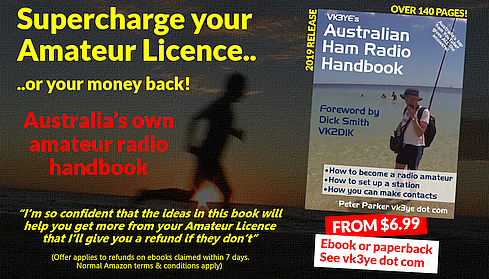Here's a great article on the history of cheap 27 MHz walkie talkies in the US.
Basically they started at 27 MHz then went up to 49 MHz to get away from interference from the then-booming 27 MHz CB radio service (though some of us would have preferred intercommunication with CBs!). Later UHF became cheaper. The USA have the Family Radio Service around 460 MHz while the Europeans have something similar around 446 MHz.
Development was a bit different in Australia. They started on 27.240 MHz in the late 1960s. Often single channel 'handphones' with maybe 100mW output. You needed to have a licence and a genuine purpose to use them. And back then CB radio was illegal (27 MHz was then an amateur band). Pirates either used amateur gear or increasingly common mobile type transceivers (which were often crystal controlled with a few channels).
We got a lot of imported models. They typically had a few crystal controlled channels and were licensed as CB radios. They were the size of a brick with a large antenna, a superhet receiver and squelch.
There were also cheap ones that kids often got as presents. In the late '70s they were on a CB channel with a crystal soldered in (often 27.125 MHz or ch 14). These didn't need a licence as they were low power. They often had a hissy superregen receiver. You could directly talk to CBers but a problem was their receivers were so broad that they'd hear pretty much anyone on the band. So you wouldn't know if they were on your channel or not. But you could still talk to an AM CBer if they were on Channel 14.
Later on, around 1980, the walkie talkies went off the CB channels. But unlike in the USA they still stayed on 27 MHz. 27.145 MHz was the most common frequency, shared with remote controlled toy cars etc. It was the worst of both worlds - their broad receivers were still susceptible to hearing 27 MHz activity but they couldn't hear you to have a conversation. Although that might have been a benefit for anxious parents worried about kids talking to truckies and others prowling the CB airwaves.
A few walkie talkies for 29 MHz FM (just above the amateur band) were sold here. Also 55 MHz, especially by Tandy. And more recently UHF has got cheaper so that's where they've ended up. Australia was a pioneer with UHF CB (477 MHz) and once again cheap walkie talkies can communicate to CBs, reinstating the brief link that was broken after the brief 27.125 MHz years of the '70s.
A few walkie talkies for 29 MHz FM (just above the amateur band) were sold here. Also 55 MHz, especially by Tandy. And more recently UHF has got cheaper so that's where they've ended up. Australia was a pioneer with UHF CB (477 MHz) and once again cheap walkie talkies can communicate to CBs, reinstating the brief link that was broken after the brief 27.125 MHz years of the '70s.
Getting back to 27 MHz, these videos are a bit more on cheap handhelds.
The handheld below is an early '80s model sold by Dick Smith Electronics. I converted it from 27.145 MHz to 28 MHz amateur (as I had a crystal). But later, after the video was done, I converted it back.
These are really cheap ones. Not even a crystal. You could shout further. Still if you're into bare bones electronic design they could be interesting.
Here's a comparison I did between 1970s, 80s and 90s walkie talkies. Older is better!
What were your early walkie talkie experiences? Please leave them in the comments below - I'd enjoy reading about them!
PS: Interested in antennas? Consider this selection of antenna books. They are affiliate links meaning that I receive a small commission (at no extra cost to you) if you decide to purchase.










